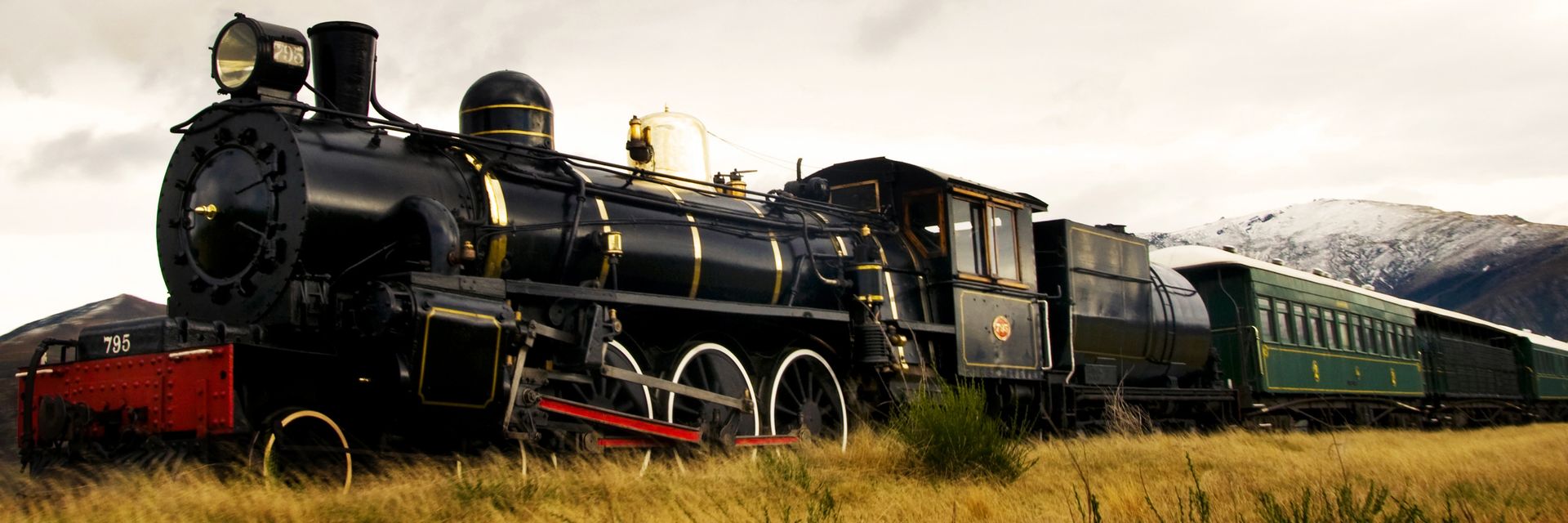Since their origins in ancient Greek civilization, trains have changed the course of human history countless times, allowing billions of ordinary people to venture far from home. Along the way, they’ve connected continents and sparked industrial and political revolutions. But how did trains evolve over the centuries to become so central to modern life?
◊
Trains are my all-time favorite form of transportation, and in fact, some of the happiest moments of my life have occurred on trains. In that sweet spot between destinations, whether scanning the Italian countryside as it passed me by one summer or viewing the city skyline from the Q train above the East River in New York, I always feel a bracing mix of nostalgia and inspiration.

Passenger train in Italy (Source: Nicola Quirico, via Wikimedia Creative Commons)
Trains allow us to escape, to travel, and to reflect while on our way. They also provide windows into the distant past. Often when I take trains, I find myself daydreaming about all the people who rode similar contraptions centuries before me.
From their roots in ancient Greece to their crucial influence on the explosion of global commerce during the Industrial Revolution era, trains have played integral roles in shaping human civilization into what it is today. They’ve carried countless people to new lands and launched countless cultures to new heights. Without further ado, let’s board a train to the past and return to where it all began.
A History of Trains: Ancient Origins of Transit
The history of trains is as long and winding as your average railroad, but one thing’s for certain: The world wouldn’t be the same without them.
As with so many innovations, the story of trains began in ancient Greece. In the 6th century B.C.E., a paved trackway called Diolkos was designed to move boats across the Isthmus of Corinth. Over the next 650 years, extensive networks of similarly grooved limestone roads cropped up in Babylon and Rome, but they fell out of fashion with the fall of the Roman Empire.
Trains reemerged in the mid-1500s in Germany, when wagonways were created to move horse-drawn carriages more efficiently than dirt roads. Wooden railway systems appeared across Europe during that century, though most relied on pulley systems or literal horsepower.
By 1700, most mines in Great Britain and many across Europe had wooden rail networks drawn by horses. Wood was replaced by cast-iron in the 1700s and then by wrought-iron rails in the 1800s, which was when things really began to pick up steam for trains.
Steam Changes Everything: The Rise of Steam Power Connects the World
On February 21, 1804, the whole world shifted on its axis when the first workable steam-powered locomotive hauled 10 tons of iron and 70 men through Wales. Built by a man named Richard Trevithick, this tramway locomotive successfully made a two-hour journey on that fateful February afternoon.
In 1812, English inventor George Stephenson picked up where Trevithick left off and created a series of advanced locomotives that became the model for future steam engines. Stephenson’s first locomotive, called the Blutcher, debuted in 1814 – and soon enough, his locomotive prototype was everywhere.
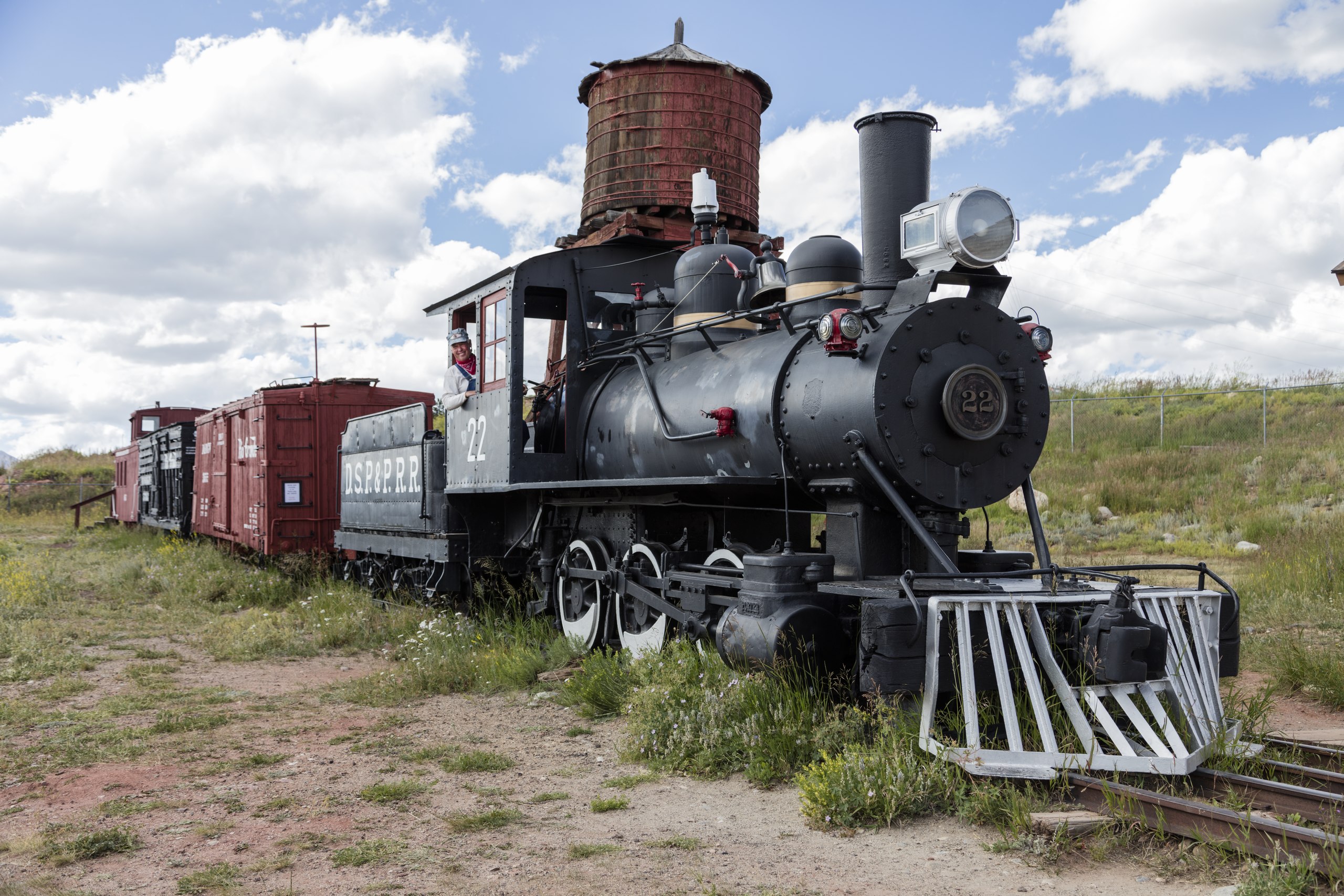
Vintage steam train (Source: Carol M. Highsmith, Library of Congress, via Wikimedia)
It took a few more years for trains to find their way to North America. The first successful horse-drawn railway in North America appeared in Quincy, Massachusetts, in 1826, and the first steam-powered rail soon followed suit in 1829. The 1830s saw trains extend their reach into Russia, Canada, Spain, and India.This abundance of railroads laid the foundation for the Industrial Revolution, a period of radical change that was largely made possible by trains.
Over the course of the 1800s, railroads began to criss-cross the world, connecting cities and far-off lands. Train tickets tended to be relatively cheap, so people who had never before been able to travel began to venture elsewhere. People around the world slowly began to build the networks that form the backbone of our modern, perpetually interconnected ways of life.
In 1837, Robert Davidson of Aberdeen in Scotland invented the first known electric train engine, and the world’s first electric tram line opened near Berlin, Germany in 1881. Over the latter half of the 19th century, electric locomotives and passenger trains began to replace smoke-belching steamers, and underground transit systems – the start of modern subways – carted people on labyrinthine pathways beneath cities.

Lichterfelde electric tram, 1882 (Source: Wikipedia)
Over time, rail transit projects became increasingly ambitious, reflective of humanity’s growing desire to link up the entire world.
A Train Revolution: The Industry and Influence of Trains
Around the mid-1800s, many trains grew more refined and elegant. Elegant sleeper cars and luxurious interior decoration made trains a favorite method of transportation for the likes of Queen Victoria, who was the first member of the British royal family to travel by train in 1842. George Pullman’s Pullman Palace Car Company began building legendary passenger cars in 1867, installing amenities like parlors and diners, and by the 20th century rail travel had generally become a comfortable experience.
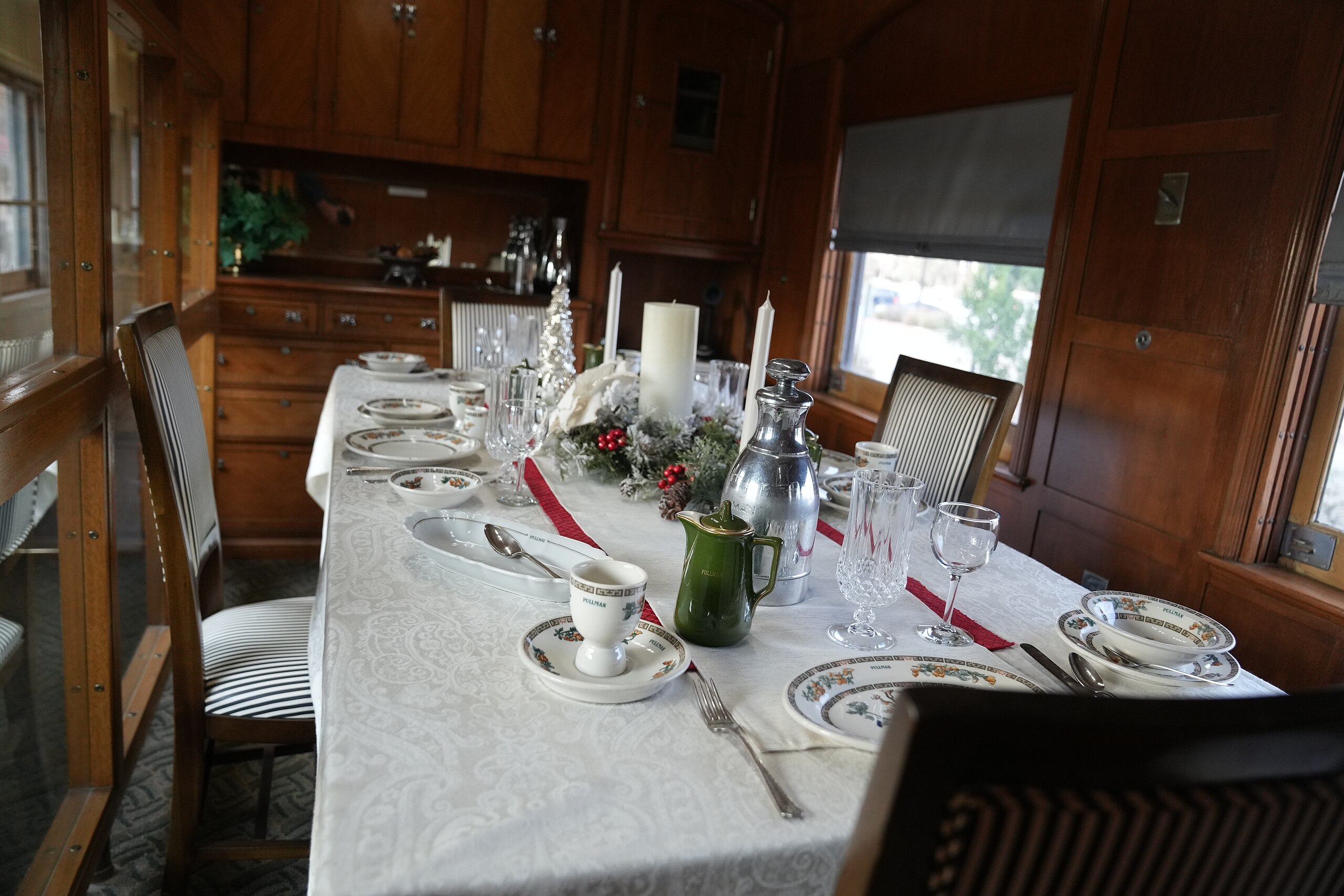
Private railroad car set for Christmas dinner (Source: Richard N. Horne, via Wikimedia Creative Commons)
Despite the refinement of some models, trains have always primarily been working people’s transit systems. “The aristocrats, if such they could be called, generally hated the whole concept of the train on the basis that it would encourage the lower classes to move about and not always be available,” writes Terry Pratchett in Raising Steam.
In the 1800s, many passenger trains were often as crowded as the average London Tube station (which, fun fact, became the world’s first subway when it first opened in 1864). Budapest’s metro became the first underground transit system in continental Europe when it opened in 1896. New York City’s subway system did not debut until 1904, but it quickly became the world’s largest metro.
“Not until the emergence of the train did travel become an activity for the middle and lower middle class,” writes Robert J. Bezucha in The Art Of The July Monarchy: France, 1830 to 1848, and it’s true. Subway trains, in particular, connected crowded cities and distant countrysides, allowing ordinary people to escape to oceanside amusement parks on the weekends and encouraging adventurous youngsters to leave their small hometowns for big-city breaks.
In 1863, the Transcontinental Railroad of North America was born, and became, perhaps, the ultimate case study in just how much trains could change the world. By the time this massive project was completed in 1907 (thanks to the labor of 21,000 workers, ranging from Civil War vets to freed slaves to Mormon pioneers), traversing what had once been an unfathomably vast expanse of land became a weeklong journey. Trains blew through mountains and deserts in short periods of time, making the world smaller and fostering rapid political and cultural changes.
“Trains tap into some deep American collective memory.” — Dana Frank, Local Girl Makes History: Exploring Northern California's Kitsch Monuments.
The project cost $60 million (roughly $1.2 billion today), but it effectively catapulted America to new heights, creating a network of trade from the East to the West coasts and spreading Western influence across the continent. It also devastated the environment and Native American culture, setting a precedent for the ways that ambitious industrial innovation would both benefit and damage humankind.
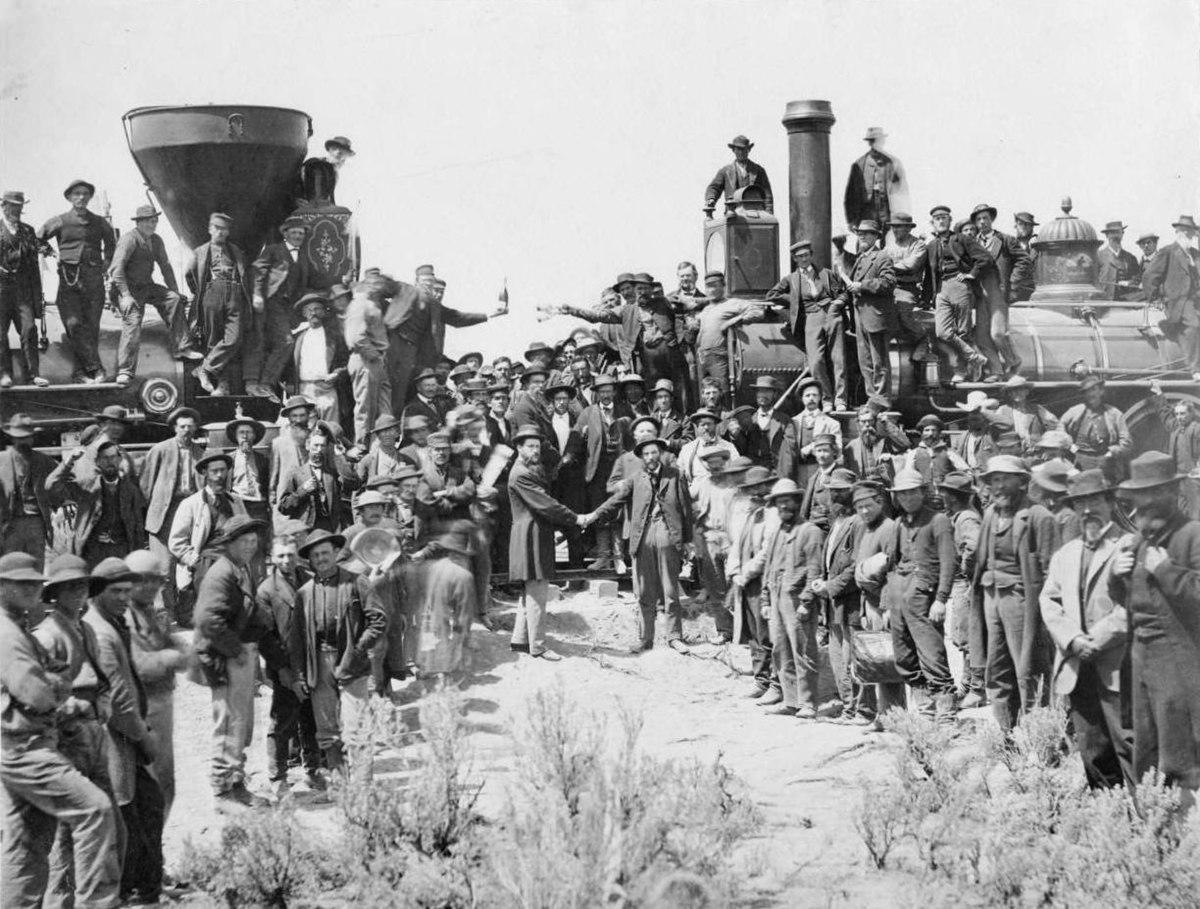
Celebrating the driving of the Transcontinental Railroad's "Last Spike" at Promontory Summit, Utah May 10, 1869 (Source: Wikipedia)
In the late 19th century, similarly massive train lines began to emerge around the globe. The first half of the 20th century was a golden age for steam-powered engines. Rail systems spread through Africa, China, and Russia, and played decisive wartime and political roles. From its beginnings in 1891 to its completion in 1917, Russia’s Trans-Siberian Railway carried millions of peasants to Siberia and consistently acted as a major liability – or secret weapon – in Russia’s wars. With the onset of trains and all the cultural changes they wrought, the modern era truly began.
Where the Past and the Future Meet: The Romance of Trains
The world before trains and the world after them look quite different. “We who have lived before railways were made belong to another world,” wrote William Makepeace Thackeray. “It was only yesterday, but what a gulf between now and then! Then was the old world. Stage-coaches, more or less swift, riding-horses, pack-horses, highwaymen, knights in armor, Norman invaders, Roman legions, Druids, Ancient Britons painted blue, and so forth – all these belong to the old period....We who lived before railways, and survive out of the ancient world, are like Father Noah and his family out of the Ark.”
Trains guided us from a much more isolated era and catapulted us towards the era of ever-increasing industry in which we now live. Yet riding them – especially if you board a particularly old-fashioned one – can feel like a return to a bygone time.
Perhaps that’s because recent history has seen air travel, speeding cars, and even more futuristic train technology overtaking the vintage railways of the past, so trains can feel like time machines. Or perhaps it’s because there’s something fundamentally timeless about trains, something entrancingly rhythmic about the practice of riding one.
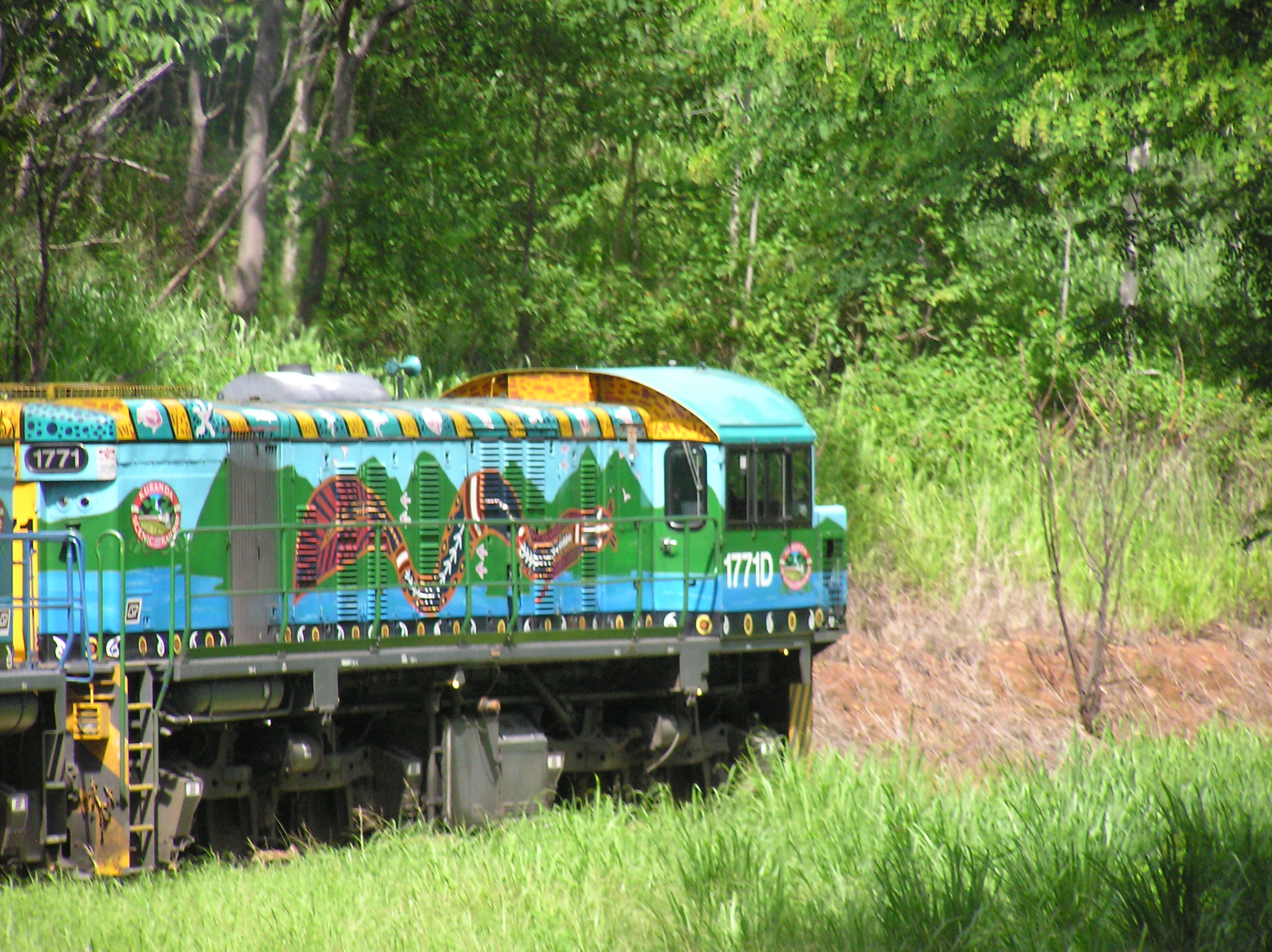
Kurana Scenic Railway, Australia (Source: gillfoto, via Wikimedia Creative Commons)
Personally, I love trains not only because of their environmental and economic benefits, but because riding on trains can provide a brief respite from a perpetually busy and terrifying world. That’s what I feel whenever I board one: a brief departure from the world at large, contained within the time capsule of a train car.
Ω
Title image: Steam engine railroad train (Source: DocWoelle, Public Domain, via German Wikipedia)
